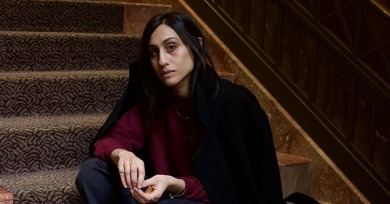Uninterested in proffering any moral judgments on bullfighting as a tradition, Serra instead investigates the perceptual, bodily specifics through which such a practice is both produced and sustained.
The current myth and meme-ification of Tom Cruise leaves out many of the specifics of the actor’s versatile and daring career.
In case you did not see the other two films, 28 Years Later provides a quick refresher. Serving as audience surrogates, a living-room gathering of increasingly anxious children watch Teletubbies while all hell breaks loose outside. Only one of them makes it out alive.
Familiar Touch, the debut narrative feature from Sarah Friedland about an octogenarian woman entering a full-time memory care facility, exists along the edges of the coming-of-age film. Ruth (Kathleen Chalfant), a chic Southern Californian, must manage new and pre-existing relationships within her changing circumstances and state-of-mind.
Cozy games run counter to the stereotypical video game: they are nonviolent, unstressful, and deliberately unchallenging. They allow players to engage at their own pace, and take on tasks that require creativity and diligence more than skill.
Good One's Sam is passive and withholding in her conversations with Chris and Matt. She does not expect them to pay attention to her feelings or consider her needs or experience. But Lily Collias, the actor, is thrillingly open and non-defensive.
Madsen has images of different materialities play out in the same frame, collapsing temporality and distance. Photographs, both digital and magnetic video, and hand-processed 16mm film are used simultaneously, often overlaid and blended, using the grammar of optical printing techniques via a digital intermediate.
Jonathan Millet has crafted a humanist spy thriller set amid the lingering memories of the Syrian civil war and the atrocities perpetrated by Bashar al-Assad’s regime that is both satisfyingly tense and gently hopeful.
Rather than see the film as a tentative foray into fiction, it may be more useful to consider The Damned as a film that explores how one might have gone about making a documentary during the Civil War.
Yamanaka has made two features to date, along with a few shorts and some contributions to television programs, yet her body of work already contains enough formal gambits and tonal shifts that one might expect from a significantly more experienced filmmaker.
Under soft lighting, amidst her drab surroundings, Hideko Takamine shines. As she and Tomioka open a bottle of shochu, Naruse keeps Yukiko centered in the foreground while Tomioka faces her in profile at the periphery of the frame.
As Craig platonically courts his cool TV weatherman neighbor Austin with increasing sweaty neediness, you wait for the other shoe to drop and for the proceedings to turn ugly.
As the financial health of the film industry deteriorates, it will necessitate smaller crews, fewer shooting days, and various other constraints . . . Caught by the Tides represents a different kind of film that can emerge from unorthodox methods and stands as a testament to the medium’s long-term possibilities.
The often solitary experience of analog filmmaking, as exemplified by the landscape films of James Benning, Babette Mangolte, and Peter Hutton, necessitates a free-form style that takes into account the scope and contingencies of nature itself.
There’s a delicious spaciousness to the first film by writer Durga Chew-Bose, which has all the sybaritic trimmings of a coastal summer: sun-dappled skin, chalky beach expanses, fresh fruit on the veranda, a perpetual breeze...














